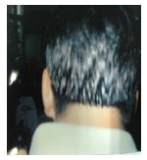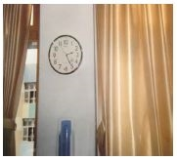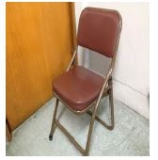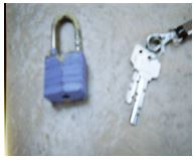
Purpose The purpose of this study was (1) to develop and to apply the PE classes based on Sportscasting Model on Creativity and Character and (2) to analyze the effects of PE classes on Creativity and Character. Methods Participants were 10th high school students(N=172) who had not experienced PE classes on Sportsasting Model. Data were collected using An Integrated Creativity Test(Lee & Lew, 2012), open-ended questionnaires and in-depth interviews with students. The data were analyzed through paired samples t-test and qualitative content analysis. Results Results showed that (1) Table-tennis and volleyball lessons on Sportscasting Model were developed and applied, and (2) significant differences were observed in creative thinking and creative personality of students’ creativity scores after lessons. And 14 creativity factors and 10 character factors were drawn from the analysis of questionnaires and interviews. Conclusion And to conclude, Sportcasting Model is efficient in developing creativity and character. Discussions were provided in terms of the development and application of PE classes based on Sportsasting Model and the effectiveness of Sportscasting Model.



PURPOSE This study sought to explore elementary school (ES) teachers' avoidance of teaching model-based instruction (MBI) in physical education (PE) lessons. METHODS An open-ended questionnaire (n=93) and three focus group interviews (FGI ) were conducted with seven ES teachers. The collected data were analyzed using grounded theory analysis procedures (Strauss & Corbin, 1997). RESULTS Accordingly, we derived a grounded theory paradigm model composed of the core phenomenon (ES teacher’s avoidance of MBI in PE lessons), causal conditions (traditional difficulties of Elementary PE lessons, mismatch between MBI and ES teachers/PE lessons, lack of experience and teacher knowledge for/in MBI), contextual conditions (complex instructor organization, powerful trend of play), intervening conditions (value orientation for fun-focused PE, misunderstanding about PE curriculum), interactive strategies (focus on screening physical activities, preparing for PE lessons with YouTube rather than teacher guide book), and results (learner inclusive effects and de-curricularization). CONCLUSIONS ES teachers’ avoidance of MBI in PE lessons is a result of several reported problems with elementary PE lessons and is likely to be a recurring problem in the future. To encourage ES teachers’ MBI in PE lessons, efforts should be made to build practical knowledge of model use in pre- and in-service teacher education.

Purpose The purpose of this study was (1) to develop and to apply flipped learning strategies in Physical Education(PE) classes based on Sportscasting Model and (2) to examine the responses of students after PE lesson. Methods Participants were 10th high school students(N=216, male=115, female=101) in high school. Instruction strategies of flipped learning was developed after theoretical investigation, and the unit plans for curling and instructional materials were developed and applied. Open-ended questionnaires and in-depth interviews were used to collect the data. Qualitative content analysis combined with of structures in lesson was used to analyze the data. Results Results showed that (1) 11 instruction strategies of flipped learning were developed, (2) and the unit plan combining out-of class activities and in-class activities organically based on Sportscasting Model and instructional materials for unit of curling were developed and applied. In step of sportscasting, forcing relationship method-sportscasting based on the survey of students was developed and applied. (3) And 31 factors of Sportscasting Model and 15 factors of flipped learning were drawn from the analysis of questionnaires and interviews. Conclusion And to conclude, this research has a value of early study to develop and apply instruction strategies of flipped learning, the unit plan and instructional materials for combining Sportscasting Model with flipped learning organically. Discussions were provided in terms of the development of flipped learning applied in PE classes and responses of students.


The importance of a health problem is emphasized in youth. Unfortunately, healthy activity physical education is not well utilized and is not popularly being researched. In order to improve these problems, this study attempted to explore the validity and applicability of SPARK program by designing and practicing the SPARK based P.E. classes. This study employed a mixed method research method based on a qualitative research strategy. Physical activity and physical fitness level were measured by accelerometers and FITNESSGAM. Additionally, empirical data were collected and analyzed by both Photovoice technique and recording. Findings of this study were divided into designing and practicing perspectives. First of all, the PE classes based on SPARK program was designed by 2009 national physical education curriculum and studies associated with the SPARK program. Further, I attempted to specify teaching strategy for enhancing physical activity level, power of execution and motivation. Second, PE class which has higher physical activity level, more participation and achievement, and successful fulfillment were emerged as consequences. Based on the study results, I discussed the validity and applicability of Physical Fitness based SPARK program and proposed suggestions for future studies.










Recently, there have been diverse types of physical activities supported by government policy in S. Korea. However, these activities may not be effective if they do not reach to moderate to vigorous level. This study designed school physical education system based on SPARK program, which include traditional physical education, sports club based physical activity, after school physical activity, and Saturday physical activity, to evaluate its effectiveness associated with physical fitness and empirical meanings of physical activity. This study employed a mixed method research paradigm for better understanding. Among various mixed method paradigm stances, this study employed "blending strategy" for complementary analysis. First of all, the effectiveness in health condition was evaluated by quantitative data. Specifically, physical fitness and lifestyle were analyzed by Helmas, IPAQ, and Accelerometer respectively. Second, empirical meanings of physical activity were analyzed by both Photovoice and in-depth interview which are qualitative research method. The result of this study first showed that a specially designed school physical activity program based on the SPARK contributed to improve students' physical fitness and lifestyle as well, however, there were important differences between male and female students. Second, physical achievement, alteration of spatiotemporal meaning, and change of societal relationship emerged as important themes. Further, these themes showed that they played an important role to maintain students' motivation in physical activity and consequently physical activity promotion was invigorated in school. Based on these results, we synthesized investment factors and process factors and outcome factors respectively. Finally, we suggested alternative teaching methods and suggestions for following research to overcome gender issues.









